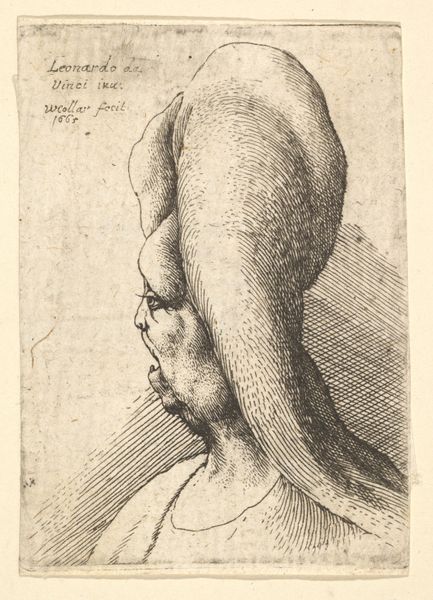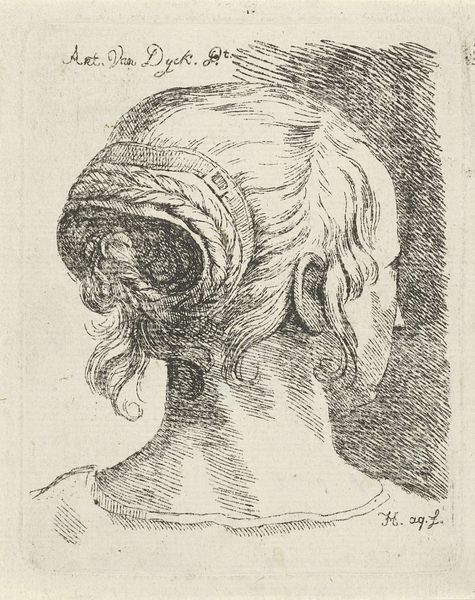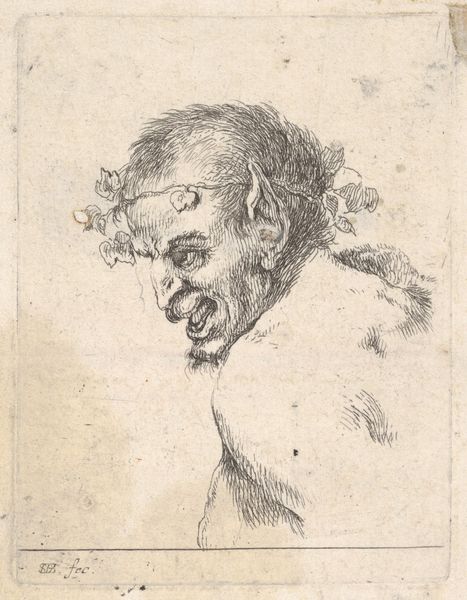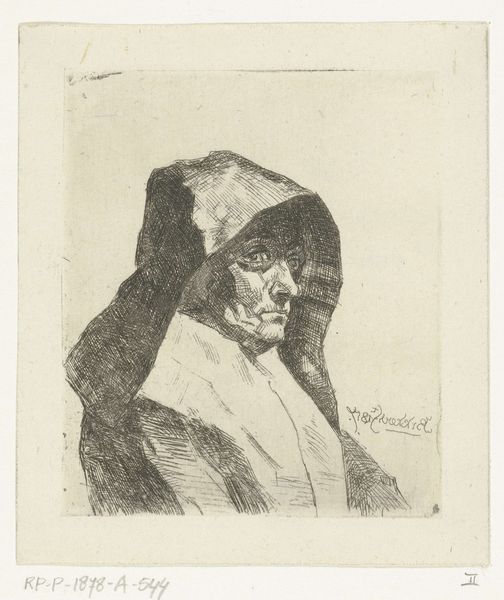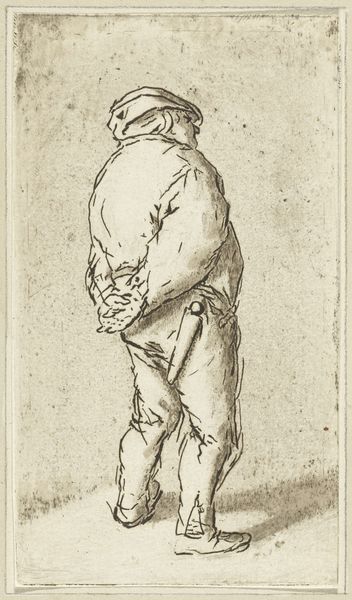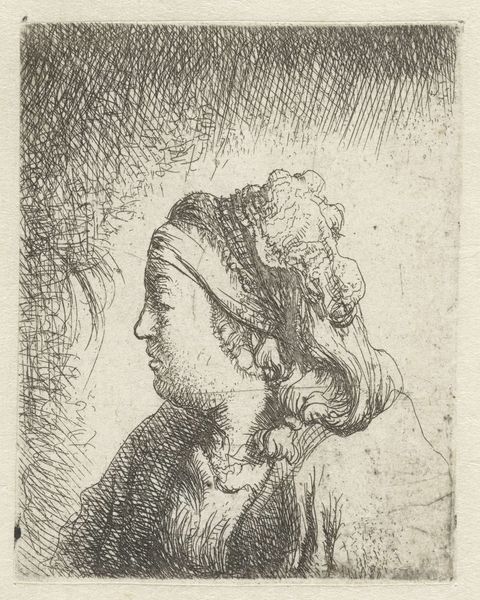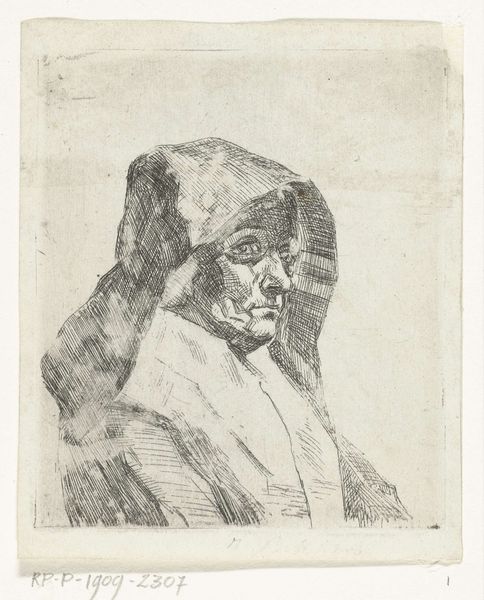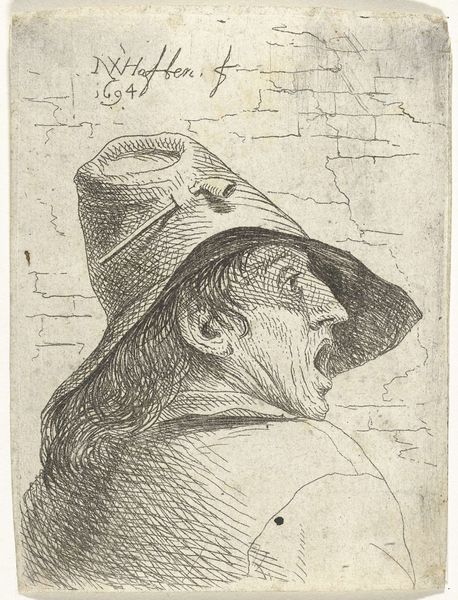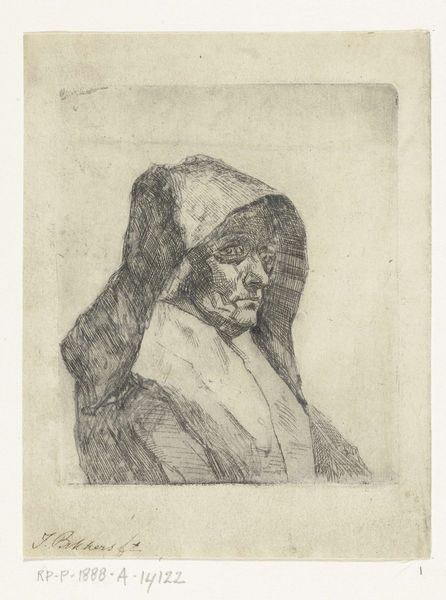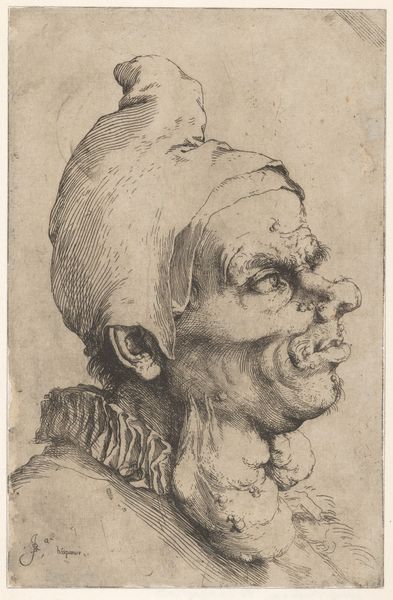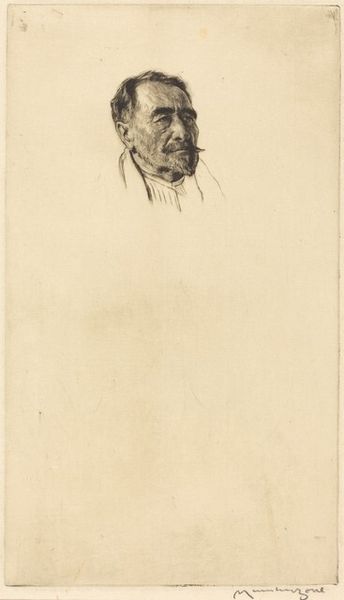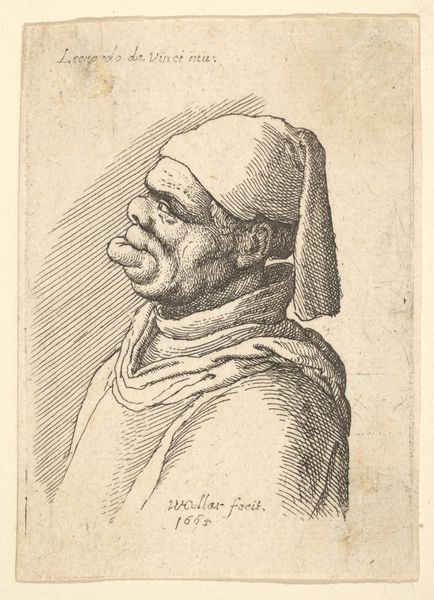
Bust of woman with protruding mouth wearing low-cut dress and cloth bound around her head, in profile to right 1660
0:00
0:00
drawing, print, etching
#
portrait
#
drawing
#
baroque
# print
#
etching
#
figuration
#
portrait drawing
Dimensions: Plate: 2 5/8 × 1 15/16 in. (6.7 × 4.9 cm)
Copyright: Public Domain
This is Wenceslaus Hollar's etching after Leonardo da Vinci, made in 1650. It's a bust of a woman with exaggerated features. Consider the public role of such an image at the time it was made. In 17th century Europe, art academies were solidifying their influence, establishing canons of beauty and taste. Prints like this circulated widely and served as visual codes for understanding the world and the existing social order. But here, Hollar presents us with a figure who seems to defy those established norms. Is this intended as a critique of those very standards? Is it a commentary on the politics of imagery itself? To understand this, we might consider the historical associations attached to the grotesque in art. Scholars of the period examine treatises, letters, and other archival material to understand the work’s institutional context. That helps us reflect on the role of art in shaping and challenging social norms.
Comments
No comments
Be the first to comment and join the conversation on the ultimate creative platform.

